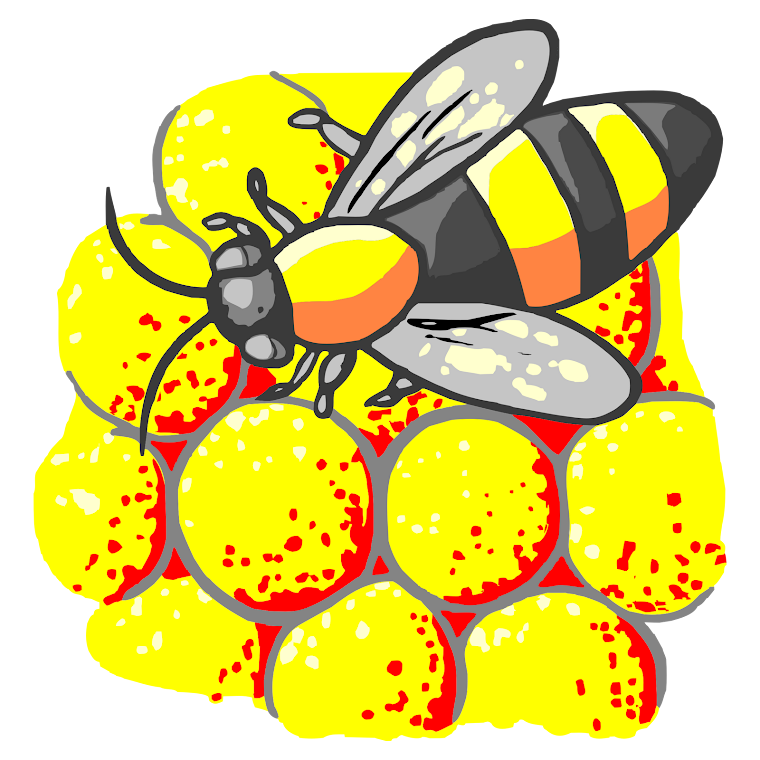LEBAH 7 - Hasil Lebah - 蜂产品 - Bee Products
The majority of commercial apiary profits come from payment for pollination services. In addition to pollination profits, several bee products are economically significant. The two most common bee products, honey and wax, are produced and used throughout the world. Honey Honey is produced from nectar, which is obtained from floral nectaries deep within flowers. Nectar provides a pure carbohydrate source for all stage of the bee lifecycle. Each worker fills her honey sac within her digestive system, increasing her weight by up to one half. Upon arrival at the hive, the worker regurgitates the contents of the honey sac to the younger workers within the hive.
These younger workers receive the nectar, which is processed by enzymes within their honey sacs, and tipped into storage cells where it then ripens for five days. At this point the substance has becomes honey, and the cell containing it is capped for storage.
Nectar from five million flowers is required to produce a single pint of honey (Tales From the Hive, 2000). During its lifetime, the typical worker makes 1/12 of a teaspoon of honey. A single pound of honey requires two million flower visits. The average commercial beehive produces in excess of 160 pounds of honey per year (Bishop, 2005). Honey has been used as a sweetener since ancient times. The color and flavor of honey is impacted by the flower source. In general, the darker the honey, the stronger its flavor. For example, orange tree-based honey has a citrus odor and taste (amber color, citrus tang, and orange aroma), while eucalyptus honey is darkly aromatic and somewhat medicinal tasting. Honey made from leatherwood, a component of aftershaves, has an exotic, spicy, aftershave scent.
In addition to its value as a sweetener, honey has a number of medicinal and antibacterial properties, and has been used in pain relief and healing of burn victims. The sugars in honey nourish healthy cells and help support the development of new white blood cells. Honey's antioxidants, amino acids and vitamins play a role in reducing inflammation. The antibacterial activity of honey rapidly kills the pathogens that cause typhoid fever, bacterial pneumonia, strep throat and bacterial dysentery. In fact, in 1998 honey was proven to be more effective than silver sulphadiazine, the antibacterial ointment most widely used on burns in hospital situations, in the treatment of burns. Beewax has traditionally been used in a number of items including furniture and shoe polish, crayons, candles, lip balms, lipstick, hand creams. In terms of worldwide corporate sales, the five largest users of beewax are 1) cosmetic companies, 2) candle makers, 3) pharmaceutical companies, 4) dentist offices, and 5) chewing gum companies. Interestingly, bees convert excess food resources within their own bodies to wax instead of fat. Wax glands on the underside of worker abdomens secrete the wax that makes up the honeycomb.
Production of a single pound of wax requires eight pounds of nectar. This same single pound of wax will be used to make 35,000 brood cells. Though there are likely few people involved in the commercial production of bees for the sole purpose of wax production, the annual wax harvest from commercial hives often provides enough money for beekeepers to refurbish old hives as well as produce some new ones for the next year (Bishop, 2005).
http://www.uni.illinois.edu//~stone2/bee_products.html |

Tidak ada komentar:
Posting Komentar